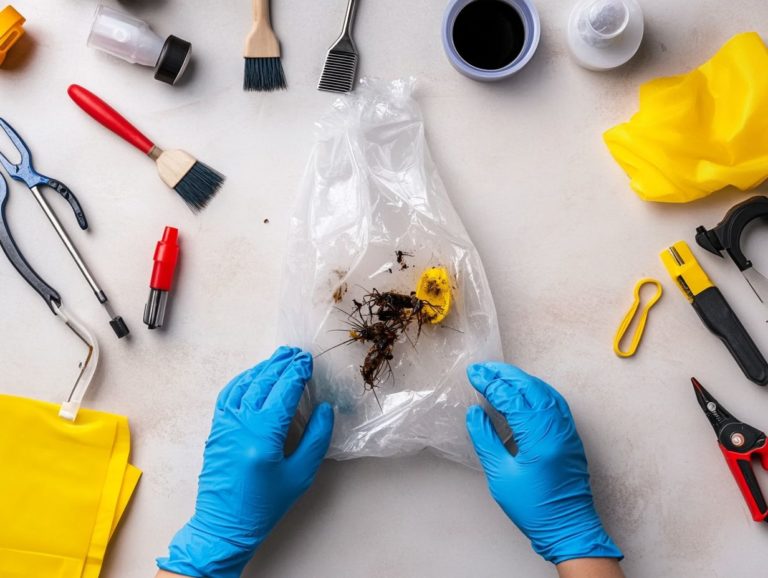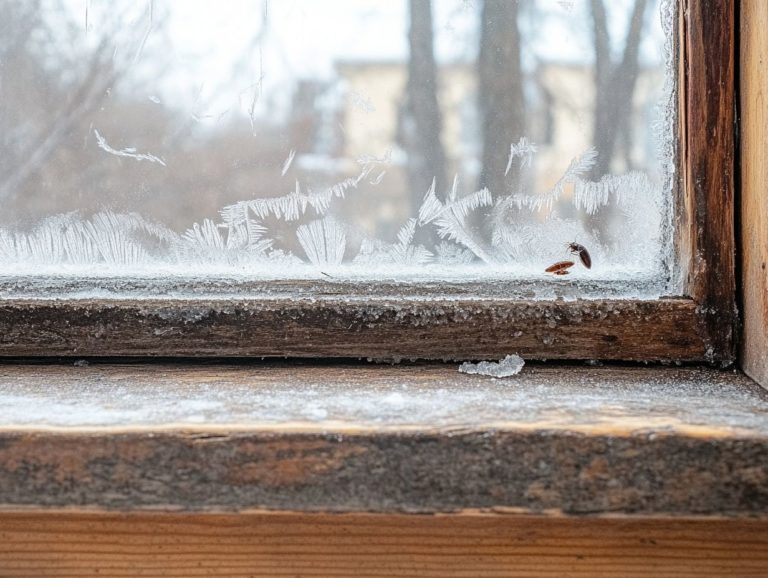How to Protect Plants from Cold-Climate Pests
Cold climates pose distinct challenges, particularly in safeguarding your plants from pests. Recognizing the signs of pest infestation is essential; early detection can be the difference between a flourishing garden and one ravaged by extensive damage.
This article delves into a range of strategies for keeping these unwelcome intruders at bay. You’ll learn how to protect your plants from the harsh winter conditions.
Discover how to ensure your green spaces remain vibrant and thriving, even during the coldest months.
Contents
- Key Takeaways:
- Common Pests in Cold Climates
- Signs of Pest Infestation
- Preventing Pest Infestations
- Natural Pest Control Methods
- Chemical Pest Control Options
- Protecting Plants in Winter
- Frequently Asked Questions
- What are cold-climate pests and how do they impact plants?
- How can I identify cold-climate pests in my garden?
- What are some natural ways to protect plants from cold-climate pests, particularly for tropical plants or perennials?
- How can I prevent cold-climate pests from infesting my plants?
- What should I do if I notice cold-climate pests in my garden?
- Are there any cultural practices that can help prevent cold-climate pests?
Key Takeaways:
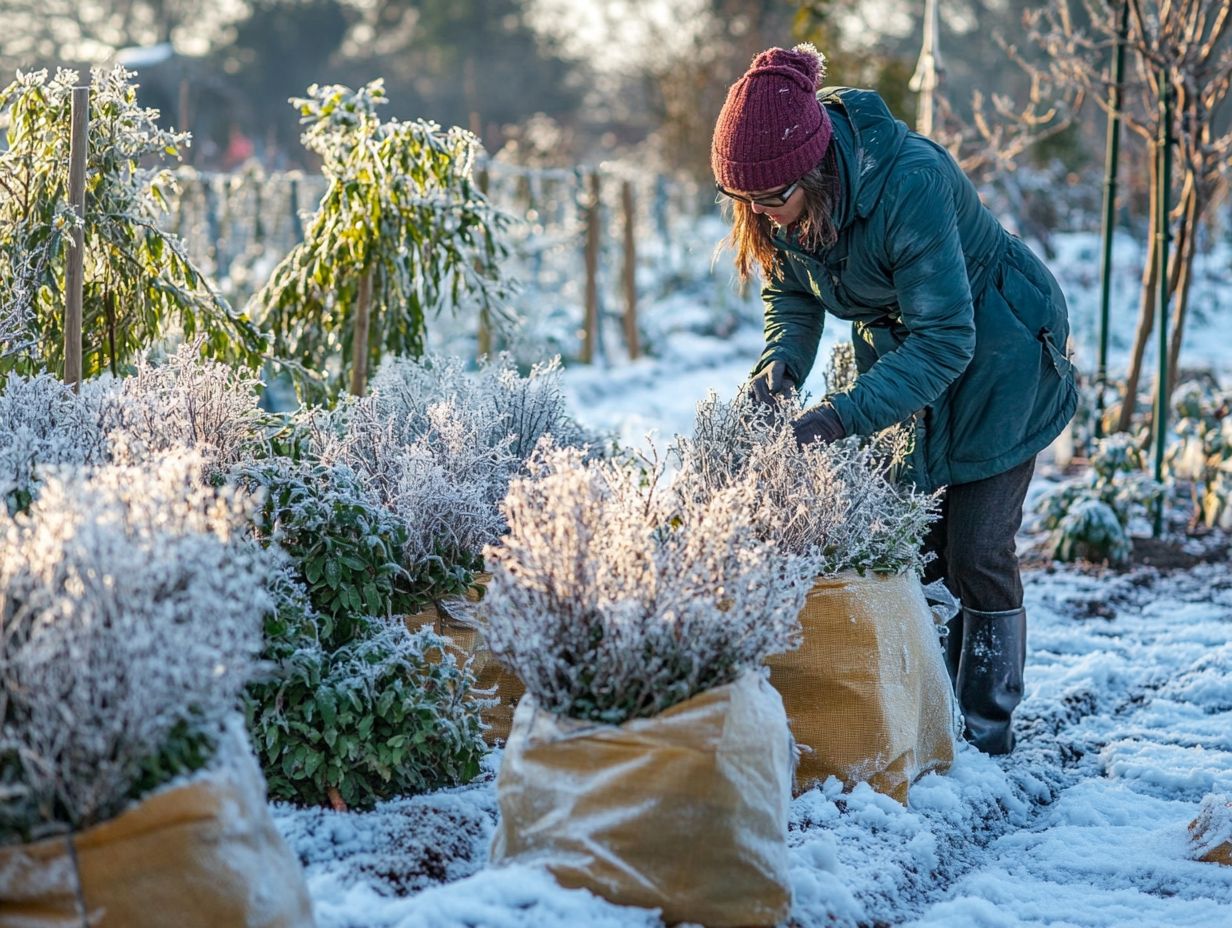
- Don’t wait! Start inspecting your plants today to ensure a healthy garden this winter.
- Regularly inspect plants for signs of pest infestation, such as wilting, discoloration, or holes in leaves.
- Implement preventative measures, such as proper plant spacing and keeping garden areas tidy, to reduce the risk of pests.
- Consider using natural pest control methods, like companion planting and homemade deterrents, before resorting to chemical pesticides.
Common Pests in Cold Climates
In cold climates, where frost and freezing conditions dominate, specific pests can devastate a range of plant species, including perennials and winter crops. It’s essential for you, as a gardener or farmer, to identify these pests early on to mitigate potential damage and safeguard the health of your crops during the frigid months. Additionally, knowing how to protect your plants from frost can be invaluable in maintaining your garden’s health.
Whether you’re contending with aphids, spider mites, or root maggots, grasping their behaviors in relation to cold temperatures is crucial for effective plant protection. Utilizing the top plant protectors for cold climates can make a significant difference.
Signs of Pest Infestation
Identifying the early signs of pest infestation can be crucial in safeguarding your vegetable crops from substantial damage, especially considering the potential for frost damage during colder temperatures.
Pay attention to any unusual plant growth, such as stunted development or curled leaves, as these can be telltale signs that pests are nearby. Discoloration like yellowing or brown spots on leaves often indicates stress, possibly intensified by these unwelcome visitors. If you spot visible pests, such as aphids or caterpillars, clinging to the stems and foliage, it s time to act swiftly.
Pests can also disrupt soil moisture retention, leading to dehydration and hampered nutrient uptake, which ultimately puts your crops’ health at risk. By keeping a vigilant eye out for these indicators, you empower yourself to take proactive measures, ensuring a flourishing harvest.
Identifying and Addressing Pest Damage
Identifying and addressing pest damage requires a sharp eye and the right garden tools to protect your plants from cold injuries.
By carefully watching your plants for signs of distress like wilting leaves or unusual holes you can assess the extent of damage inflicted by various pests. The next step is to decide on suitable pest control methods, which could range from introducing beneficial insects to applying organic pesticides.
For added protection, employing plant covering techniques, such as row covers or garden nets, can effectively shield vulnerable varieties from harsh weather and uninvited critters. Implementing these preventive measures not only enhances plant health but also fosters a thriving ecosystem in your garden, ensuring a bountiful yield.
Preventing Pest Infestations
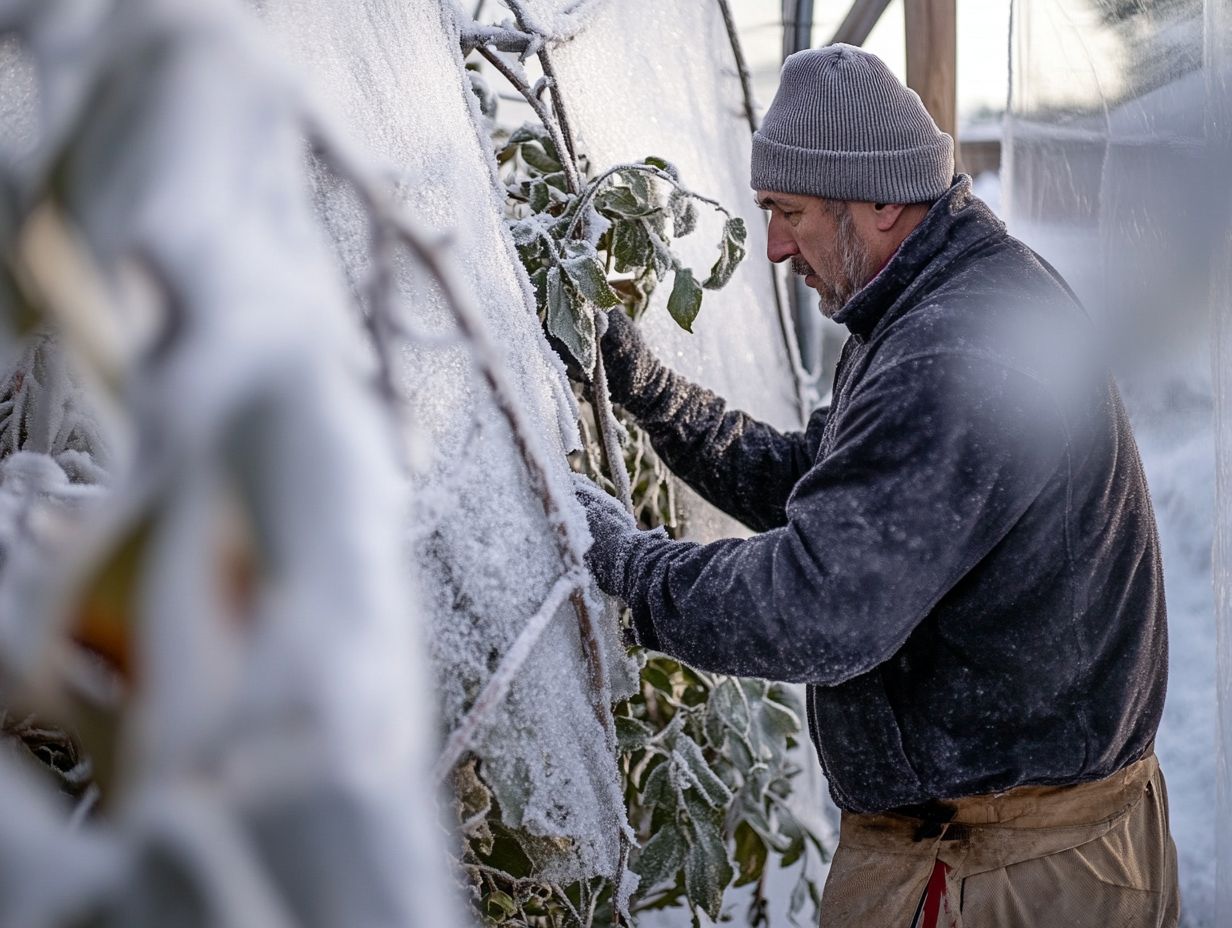
Preventing pest infestations is crucial for preserving the vitality of your garden. Employ strategies such as frost protection and effective plant hardening techniques, preparing plants to withstand cold, complemented by mulch insulation, to create a robust defense against unwanted invaders. For more comprehensive approaches, consider the top cold-climate pest management strategies.
Effective Strategies for Pest Prevention
Implementing effective pest prevention strategies can transform your gardening experience. Techniques like warm water treatments, cold frames, and wind machines elevate the protection of your plants.
These methods minimize pest infestations while fostering healthier plant growth. For instance, warm water is an excellent ally in managing new pests; when applied correctly, it can even enhance nutrient absorption.
Cold frames, on the other hand, act as cozy sanctuaries for your tender plants, shielding them from unpredictable weather and temperature swings, providing a better home for vegetables like broccoli, kale, carrots, and radishes.
Wind machines also serve a dual purpose in colder climates, generating warmth while keeping pests away. Each of these strategies brings unique benefits, making them vital components of an integrated pest management approach.
Natural Pest Control Methods
Discover how natural pest control methods give you an eco-friendly way to protect your garden! These methods emphasize organic remedies that effectively shield various plant species from infestations while preserving the environment, especially for tropical plants.
Using Natural Remedies and Deterrents
Utilizing natural remedies and deterrents, such as essential oils and Homemade sprays, allows you to effectively manage pest populations while fostering overall plant health.
These organic solutions repel unwanted insects and contribute to a healthier environment for your plants, enhancing the growth of flowering buds and plant roots. For instance, oils like peppermint, lavender, and tea tree are celebrated for their pest-repelling properties, creating an inhospitable setting for common nuisances like aphids and spider mites.
Homemade sprays, crafted from simple ingredients like water, vinegar, and a few drops of essential oils, can become powerful allies for gardeners seeking chemical-free alternatives. Incorporating diatomaceous earth also helps deter crawling insects, making it a favored choice for those dedicated to sustainable gardening practices.
Chemical Pest Control Options
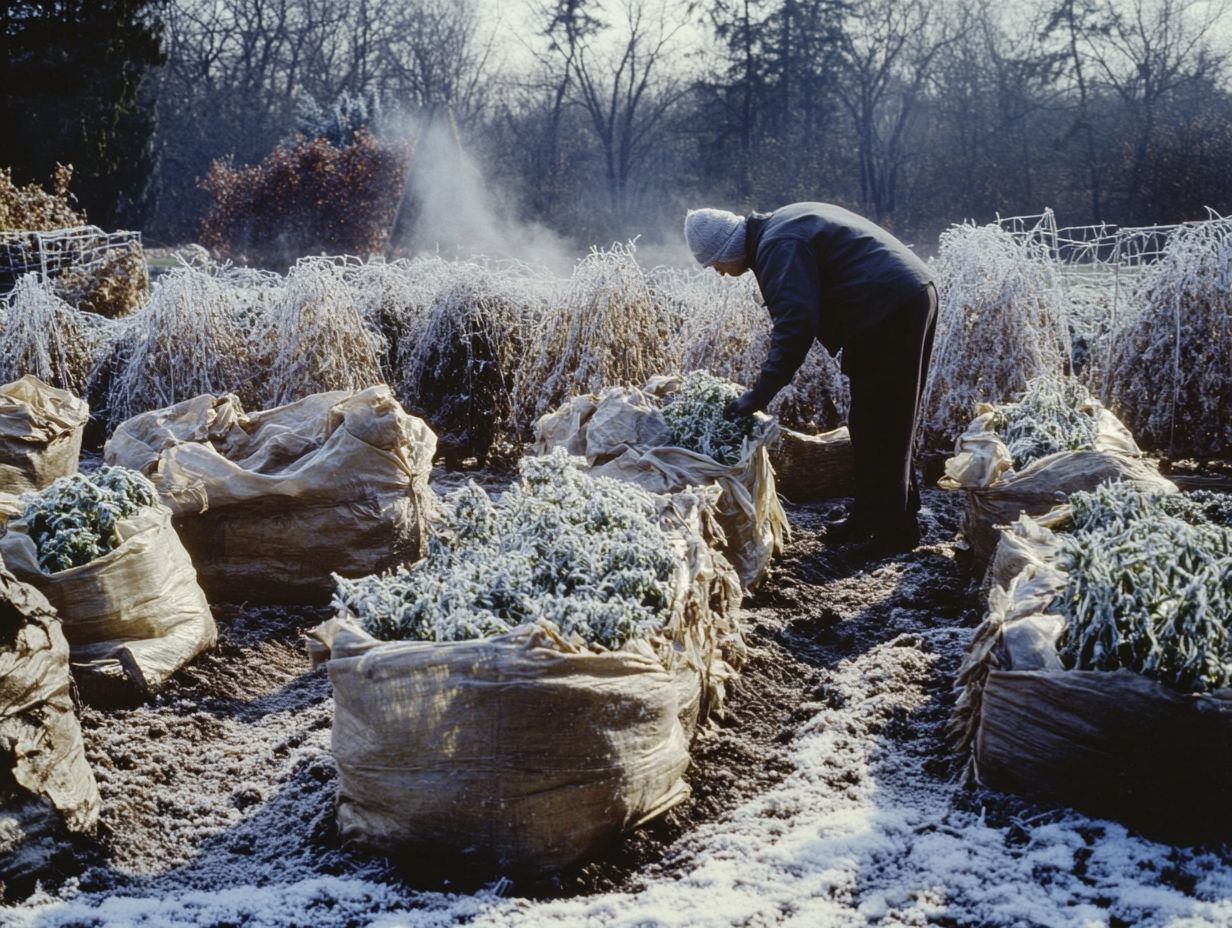
Chemical pest control options, including a range of pesticides (substances used to kill pests), can indeed be effective when utilized properly. However, it’s essential for you to understand the appropriate application methods and safety regulations, particularly concerning crop insurance.
This knowledge not only safeguards your plants but also protects the environment, ensuring a balanced approach to pest management.
When and How to Use Pesticides
Understanding when and how to use pesticides is crucial for their effectiveness, especially regarding the pest lifecycle, which can significantly impact your crop insurance considerations.
Timing is everything; applying pesticides during specific growth stages of pests can greatly enhance control efficiency and reduce infestations, especially when aligned with frost advisories. Weather conditions are equally important; for instance, applying pesticides in the early morning or late evening, when temperatures are cooler and winds are calmer, minimizes drift and evaporation.
By monitoring pest populations and their life cycles, you can ensure that your applications are precisely timed for maximum impact, safeguarding crop health while remaining compliant with insurance policies. Staying informed about regional pest reports and adjusting your strategies based on recent weather events can significantly enhance your treatment success, all while protecting your crop insurance coverage.
Protecting Plants in Winter
Act now to thoroughly prepare your garden. Protecting your plants during winter is essential, particularly in areas susceptible to frost and freeze, which can severely impact your vegetable crops. Taking the time to prepare will ensure the survival of your delicate plants and crops throughout the challenging months ahead.
Preparing for Cold Temperatures and Snow
Preparing for cold temperatures and snow requires a strategic approach to your garden. This means understanding dates when frost is unlikely to occur and using mulch insulation to shield your delicate plants from the elements.
Timing is everything. You should initiate this process well before the first expected frost. Select plants that are resilient in winter. Varieties like celery, cauliflower, and beets thrive in the cold. By incorporating perennials that naturally withstand frost, you can reduce maintenance during the winter months.
Implementing protective measures like row covers and windbreaks will help safeguard your more vulnerable species from harsh conditions, particularly flowering buds during the winter months. Ensuring proper soil health with organic matter or compost is crucial. It aids in moisture retention and temperature regulation, better preparing your garden for winter’s chill, especially in the USDA Cold Hardiness Zones.
Frequently Asked Questions
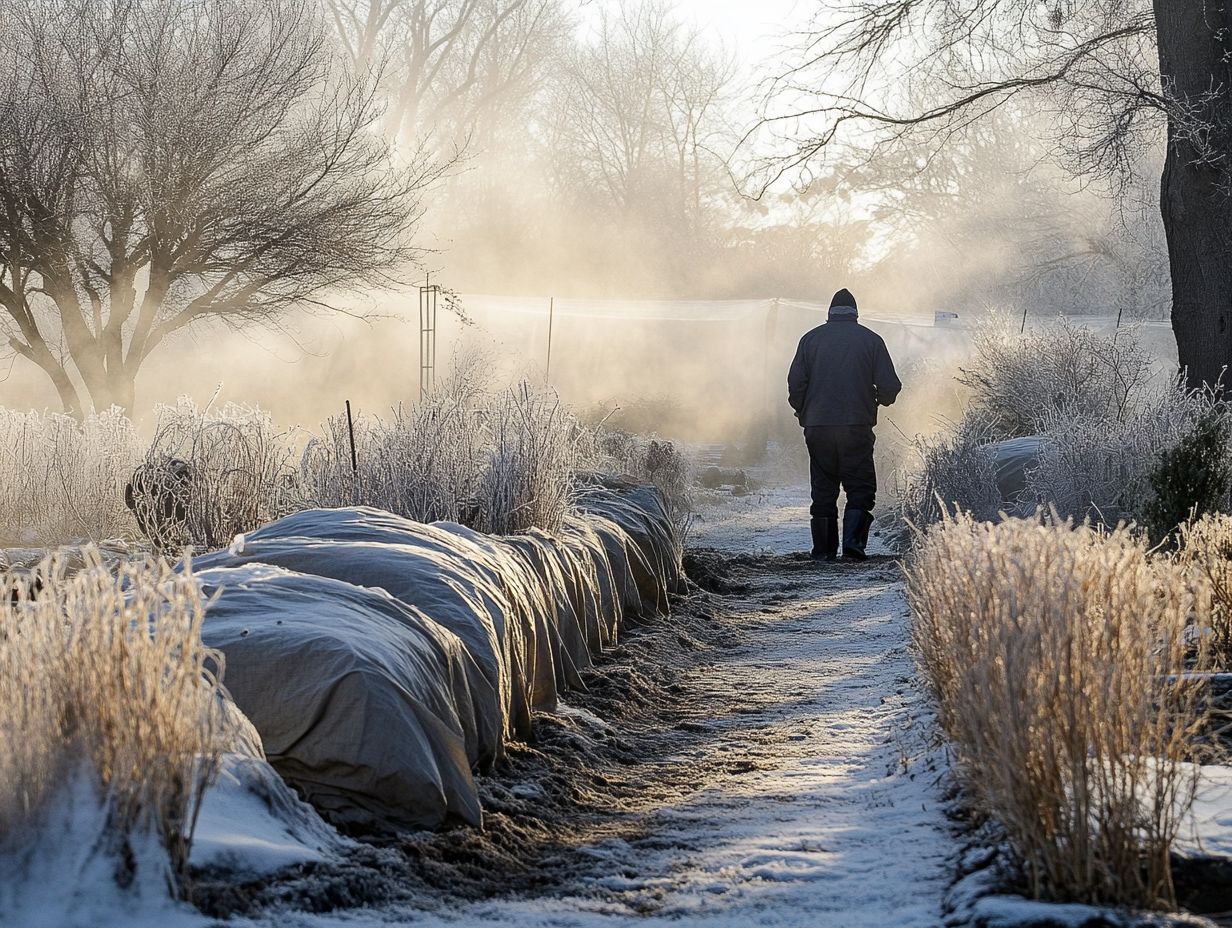
What are cold-climate pests and how do they impact plants?
Cold-climate pests are insects and animals that thrive in cold temperatures. They can cause damage to plants by feeding on them or spreading diseases. Understanding pest resistance in cold climates is crucial, as these pests can stunt plant growth, reduce yields, and even kill plants if left unchecked.
How can I identify cold-climate pests in my garden?
To identify cold-climate pests, regularly check your plants for signs of damage, such as holes in leaves, wilting, or discoloration. It’s also helpful to reference resources on identifying common cold-weather garden pests and look for the pests themselves, such as aphids, caterpillars, or rodents.
What are some natural ways to protect plants from cold-climate pests, particularly for tropical plants or perennials?
Natural ways to protect plants from cold-climate pests include companion planting, which involves growing pest-repelling plants next to vulnerable ones, and using organic sprays made from ingredients like neem oil or garlic. For more detailed strategies, consider protecting your garden from winter pests.
How can I prevent cold-climate pests from infesting my plants?
To prevent cold-climate pests from infesting your plants, keep your garden clean and tidy. Removing any plant debris and regularly inspecting and maintaining your plants is crucial. Additionally, consider implementing organic pest solutions for cold climates, such as physical barriers like row covers or netting, to keep pests away.
What should I do if I notice cold-climate pests in my garden?
If you notice cold-climate pests in your garden, the first step is to identify the specific type of pest and the extent of the infestation. From there, choose the most appropriate method of control, such as picking off pests by hand, using traps, or introducing natural predators.
Are there any cultural practices that can help prevent cold-climate pests?
Yes, several cultural practices can help prevent cold-climate pests. These include rotating crops, planting resistant varieties, and practicing good garden hygiene. For more details, check out common pests in cold-climate gardening. These practices create a healthy and diverse garden ecosystem that is less attractive to pests.


